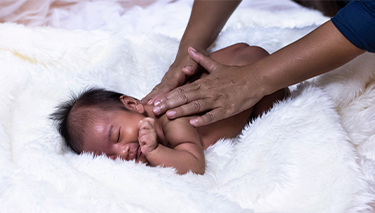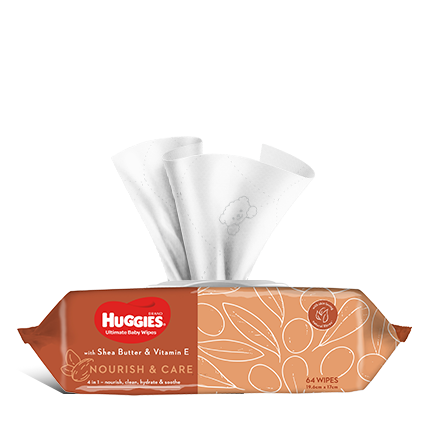By the time your baby has reached 3 or 4 months of age you are likely to notice longer periods of time awake during the day (and hopefully longer periods asleep at night!).
Some of the newborn reflexes will be starting to subside as more voluntary activity takes over.
Your baby will probably be more interactive both vocally and through physical expression and they may want to start rolling over when you are massaging.
If you have been giving your baby regular massage for a while they may be so attuned to it that they remain completely focused. However if this is not the case, go with them and adapt your routine around their need to explore their new and developing curiosities and physical abilities. For example, if your baby rolls on to their tummy do back massage.
When they are ready to go on to their back, do their front. If they want to sit, support them and try arms and hands.
Remember to massage cheeks and behind ears as teething time is starting and this can help to relieve soreness and congestion.
Between 6 and 12 months so much is happening! Your baby is likely to be wriggling, rolling, sitting, crawling, pulling up to sit or stand. If your baby wants to be active during massage try varying what you do by altering positions, introducing toys, making some strokes more vigorous and others very soft and quiet. Add rhymes or little made up stories or songs to go with the strokes. Share in their exclamations of delight or humour.
Recommended reading (with lots of pictures) re. early childhood development – ‘Baby it’s You’ by Annette Kamiloff-Smith.
Contributed by Anne White
Nurse, Massage Therapist, IAIM trained Infant Massage Instructor
For more information see Baby Massage or Baby Care
Last Published* May, 2024
*Please note that the published date may not be the same as the date that the content was created and that information above may have changed since.




















